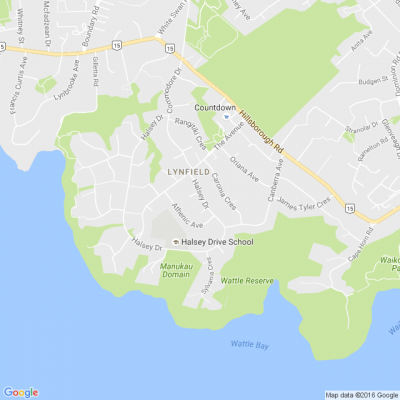More than 500,000 New Zealand students drive themselves or are driven by somebody else to school every day
For the first time, Stats NZ asked people about their main means of travelling to their place of education. It found 128,000 drove themselves, and 450,000 were driven by someone else. About 113,000 get a school bus, 82,000 a public bus and just 21,000 hop on a train. St Kentigern College year 13 student Ben Fraser said most of the pupils in his year and the year below drove themselves to school. "We're in a society that really thinks driving is like a demonstration of being successful and being wealthy and [it] doesn't see public transport as having those same qualities," he said. "If you're on public transport, people will see that as being only because you can't afford to own your own car. There's also of course the element that when you get your restricted when you're 16, that's a really exciting opportunity. You feel like you're becoming an adult and that you're maturing." Mr Fraser, who's also the deputy chairperson of the Howick Youth Council, said he still takes the bus - not only because he can't afford a car but because it's just more convenient. "I'm in a position where I'm quite lucky because going on public transport is actually quicker for me to get to school than driving. On my route to school we've got a T2 lane, which means that my bus doesn't have to compete with all the cars in the area, and the buses come really regularly." In New Zealand's biggest and most congested city, Auckland Transport says traffic volumes are reduced by 10 to 15 per cent during the school holidays - representing some 70,000 fewer car trips. Transport commentator Matt Lowrie, from the Greater Auckland website, said the latest numbers weren't a surprise to him, because many parents think it's too dangerous for their children to make their own way to school. "We often hear stories of very bad behaviour by parents dropping their kids off at school in their cars. The less safe the environment is for kids to walk and cycle to school ... more parents say will say, 'Well, I'm not going to let my kid walk or cycle to school'. And so you have more people driving again," he said. "It's a cycle that goes around in circles and means as a result, we have kids that are less healthy and less active. And it also causes more congestion." When it came to high school and university students driving themselves, most students were on restricted licences so couldn't carry passengers. However, Mr Lowrie said it was too simplistic to think reducing vehicle numbers to school holiday levels would see free-flowing traffic all the time. "As the roads are clearer it encourages more people to drive and drive at times when they might want to travel as opposed to delaying travel, or not making the trip at all. Or making it by another method. "So the presence of free-flowing motorways is great ... [but] it encourages more people to drive and therefore will eventually back up again." Secondary Principals Association president Deidre Shea pointed out that some parents were dropping off children at more than one centre. Many people also travelled long distances to get to schools or other education facilities far from their homes, she said.
"Particularly in Auckland but in the other bigger centres as well, there are a number of young people who do not attend the local school and that makes a huge difference to the travel across our city," she said. "If folks attended their local school there would be a lot less traffic on the roads during term time." Ms Shea believes - and hopes - that with growing concern about human impact on the environment, students will increasingly opt to hop on a bus or train and leave the car at home.
==========================================================
Today’s Mind-Bender is the Last of the Year! Can You Guess It Before Everyone Else? 🌟🎁🌲
I dance in the sky with green and gold, a spectacle few are lucky to behold; I’m best seen in the south, a celestial sight—what am I, lighting up the New Zealand night?
Do you think you know the answer? Simply 'Like' this post and we'll post the answer in the comments below at 2pm on the day!
Want to stop seeing these in your newsfeed? No worries! Simply head here and click once on the Following button.

Charities turning away high numbers of volunteer applications
Charities are turning away people wanting to volunteer amidst a flood of interest they say is linked to the high rate of unemployment.
It comes as some businesses receive thousands of applications for paid roles and people look for experience anywhere they can.
The advocacy organisation Volunteering NZ has been tracking the trend. Spokesperson Margaret McLachlan said there has been a considerable rise in applications for volunteer roles across a range of charities.
Many application forms asks people to divulge if they are job hunters.
"Over the last year or so, they are seeing more people coming in who are saying they are in that category. They are looking for work but doing volunteering while that process is taking place."
"As unemployment increases and the cost of living, times are tougher for everybody."
At the same time, she said community organisations supporting social services were busier and needed more helpers.
McLachlan said depending on the organisation, they might want to do a police check, a reference check and an interview.
"In some cases it can be a process to go through and not always, and that can take some time.
"It's actually the same barriers that a person might find in finding a job, can also apply to volunteering. It's not always a easy option."
SPCA had 120 op shops and animal rescue centres across the country in which volunteers worked.
General manager of retail Cathy Crichton said they received about 1300 extra applications for volunteer roles, a 32 percent increase, from June to November 2025, compared to 2024.
"There's definitely a nudge forward which is very exciting and we're very grateful."
But it meant they were not accepting any more volunteers in some areas.
"Because the applications are up it's a unique scenario. But at this point in time, in smaller locations, we've actually got a hold in 19 locations in New Zealand where we are at capacity - and that's very rare and it's a very new trend."
Crichton said anyone seeking volunteer work should think creatively about what skills they can offer - it could be in administration or marketing.
"We'd love to welcome as many people as we could because the more hands on deck the more we can do and the more we can contribute to the community."
She said people were self-motivated to apply for volunteer work.
The unemployment rate rose to 5.3 percent in the September quarter, meaning 160,000 people were jobless. The next quarterly figures are out in February.
"There's a willingness to give back and contribute to the community. Unemployment being high really does encourage people to engage with the workforce and get experience," Crichton said.
"It really is about staying connected with the community and meeting others."
She said they had also seen an increase in young people seeking volunteer work experience.
"It's a great opportunity to get work experience and a reference and there's an appeal there as an employer...I really do think it adds value to a CV."
Stats NZ data showed over half of New Zealanders, 53 percent, volunteered during March 2025 and of those, 27.6 percent volunteered through an organisation and 40.8 percent volunteered directly for another person.
=====================================================








 Loading…
Loading…




